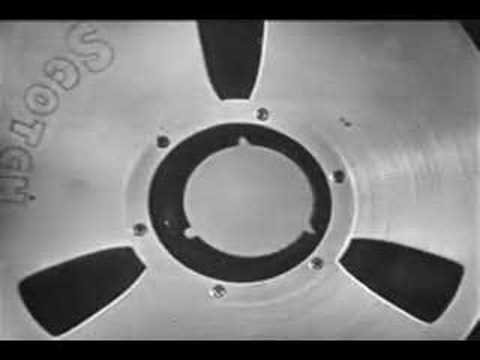

State Of The Art Television: 1961 & The Ampex Editec System
State Of The Art Television: 1961 & The Ampex Editec System
This great 1961 demo tape from KTTV in Los Angeles gives us one of the most thorough run throughs of video switching effects and video capabilities of that era available. Keep in mind though, videotape was still a cut and splice process till 1963 when Ampex introduced the Editec system which came after this video was created, but here’s the way it worked…
Editec was the first form of electronic video editing, allowing broadcast television editors frame-by-frame recording control, simplifying tape editing and the ability to make animation effects possible, but left a lot to be desired. They had no time code, no way to mark edit points, and no pre roll.
Just like the cut-and-splice technique, editors found edit points by stopping the tape near the start of a scene and fine-tuning the reel position by hand.
With points marked on both machines, they manually wound the tapes backward an equal number of control track pulses. Then they started both machines playing at the same time. At the edit point, they punched record on the master machine.
Two things determined whether the edit hit at the right time: the speed of the machine’s record switch, and the carefully-timed twitch of the editor’s finger.
If the editor hit the button early, or if the switch started recording a fraction of a second sooner than the editor guessed, the previous scene on the master got clipped.
If the edit happened too late, the editor had to decide if it was bad enough to take a second time. Repeating edits got tricky because the window to get it right grew narrower and narrower with each attempt. If the second try triggered too soon, it botched the master. If it triggered too late, it meant yet another try.
Typically, alert editors and reliable machines could get within a half-second of the intended edit point using this technique. Enjoy and share!
I worked at a small market station beginning in the late 70’s. We did a lot of commercial production using A/B roll through a Grass Valley 1600 switcher which had a a pattern generator, and sometimes directors became obsessed with it. IMO effects for the sake of effects are only a substitute for good content.
The only editing I ever did was on 8750’s. However, I once had the opportunity of editing a segment at the Children’s Television Workshop in NYC (1975). I thought it was cool. Why did it take so long to devise and develop?
Is that Stan Freberg doing the voice over?
There sure is lots of dust and scratches for tape!
Electronic editing came in three phases. The first Dennis Degan refers to where the editor had to hit record half a second before it was needed. Editec added cue pulses. You could lay down a series of pulses and instruct the edit board to record at a specific cue (and stop at the next). The third phase is the most familiar with time code and external computer control.
My first edit was in 1974 in a TV station in Columbus, GA WYEA-TV, the NBC affiliate. It was electronic, but all manual. ‘Punch & Pray’ was what it was called. This is because there’s a 15-frame delay (18 frames on RCA VTRs) between hitting the button and when the edit actually starts. This delay is due to the fact that the erase head and the video head wheel are at different places along the tape. First, the machine must erase the previous recording before new video can be recorded in its place. Controlling the manual timing of edits was somewhat of a learned art at the time, which only became easy with the introduction of Editec and later, computer-controlled time code editing.
Where’s my Sharpie?
I actually had a film copy of that demo. That and a collection of about 10 years of TV Guide spots. Sadly they were tossed out after I left KTTV even through I said I’d be back to claim them.
Interesting that the presentation the link is to was pretty obviously from film. Wonder how/why that process happened? Obviously it _was_ on tape…
Guessing, if it was a promotion for sales, (it’s not expensive) at that time the easiest way for people to see copies was a 16mm print. As they pointed out, they had the facilities to do that.
Looks as if the final edits were to film.
Back in the early 80’s we had a room with Ampex VPR-1200 VTRs that we used Editec to do test commercials for AD Companies.